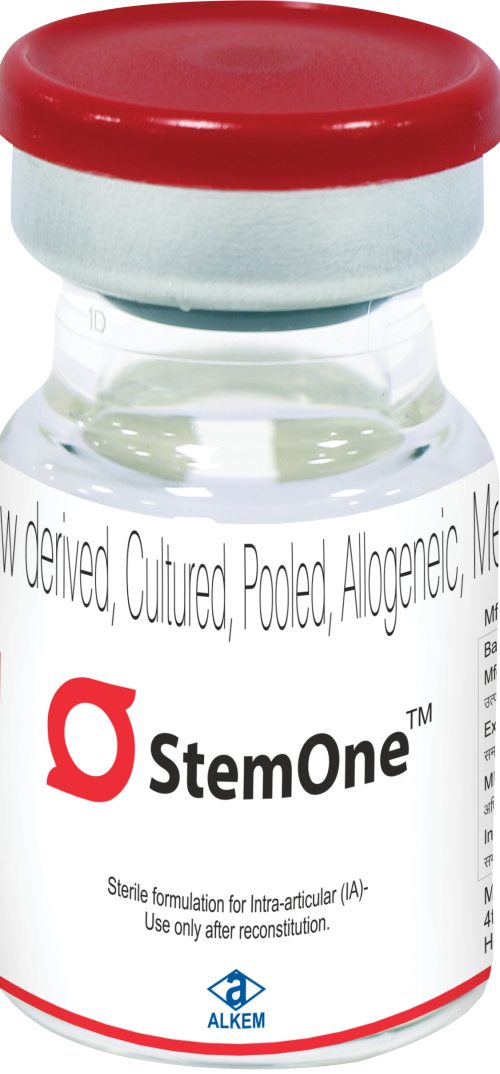The StemOne™ injection should be administered intra-articularly, using a 5 ml syringe, under all
aseptic
precautions.
The StemOne™ injection should be injected immediately after preparation and should not be stored.
The intra-articular injection should be administered using a 2-inch (5.1 cm) 20G needle mostly as a
medial or lateral parapatellar injection (an injection into the patellofemoral joint). However, optimal
joint positioning and site of needle insertion for the affected knee may vary according to the anatomic
and pathologic conditions present.
After injecting StemOne™, the syringe should be detached from the 20G needle (which is not removed from
the site of injection) and HA (molecular weight 500,000 – 730,000 Daltons), which is a pre-filled
syringe, should be injected through the same needle. Thus, piercing of the needle intra-articularly will
be done only once.
The temperature logger displays a temperature above −185°C, when the StemOne™ vial is being
recovered from the cryo-shipper.
The StemOne™ vial is found to be damaged or leaking.



